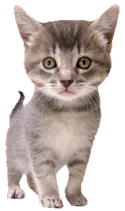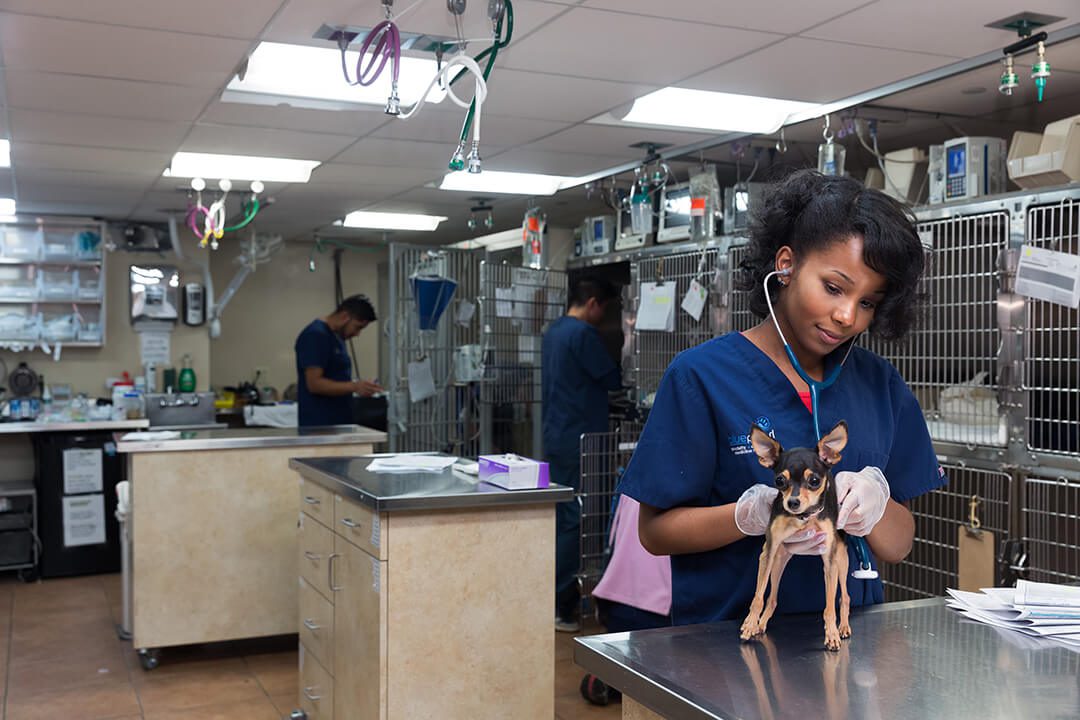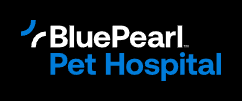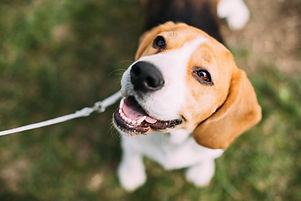Best Emergency Vets In New York City, NY | 2024
Facing a pet emergency in NYC? Don't panic! This guide highlights the top-rated emergency veterinary clinics and hospitals open to save the day (and your furry friend) in 2024.

1. VETERINARY EMERGENCY GROUP
- 735 6th Ave, New York, NY 10010, USA.
- Contact - 646.582.8882
- It has a 4.9 star rating on Google Maps.
- Opening hours today are Open 24 hours.
- Website Link - Veterinary Emergency Group
- Immediate Care for
2. VETERINARY EMERGENCY GROUP
- 1215 2nd Ave, New York, NY 10065, USA.
- Contact - 212.223.3500
- It has a 4.6 star rating on Google Maps.
- Opening hours today are Open 24 hours.Website Link - Veterinary Emergency Group
- Immediate Care for
3. INSTAVET URGENT CARE & WELLNESS ANIMAL HOSPITAL
- 44-16 23rd St, Queens, NY 11101, USA
- Contact - 917-525-2579
- It has a 4.2 star rating on Google Maps.
- Opening hours today are 8:00 AM - 8:00 PM.
- Website Link - InstaVet Urgent Care & Wellness Emergency Group
- Immediate Care for
Breathing Problems : Watching your pet struggle to breathe can be terrifying for both you and your pet. If your pet has difficulty breathing, it means something is going on, and it definitely can be classified as an emergency. Breathing problems can be caused by a wide range of things, such as heart failure, an allergic reaction, a blockage in the lung, and a variety of other serious problems. In this situation, you should seek emergency pet services immediately.
Seizures : If your pet has had seizures in the past or if they have just had their first seizure, you need to take them to an animal hospital for emergency veterinary services as quickly as you can. Seizures occur as a result of abnormal electrical activity in their brain. Seizures can sometimes be isolated, whereas other times, they occur in groups. Still, either way, several things may cause your pet to have seizures, so you must seek medical attention for them as soon as possible.
Trauma - There are many types of trauma that your pet can experience. If your pet has experienced any strike or blow, such as being hit by a car that causes injury or damage to any part of their body, they should be seen by a veterinarian as soon as possible. If you aren’t sure how to transport your pet to the animal hospital following trauma or if you have questions about what to do during transportation, such as covering a wound or bracing a broken bone, contact your veterinarian for recommendations while you are in route or just before going to the emergency room.
Foreign Body - Pets eat the weirdest things. Unfortunately, often these things may cause obstructions (blockages) in the intestinal tract. When this occurs, it is life-threatening, and emergency care should be sought right away. Common symptoms include (but are not limited to): acute vomiting, straining to defecate, lethargy, and loss of appetite.
Urinary Issues - Bladder stones, kidney stones, internal lesions, and other urinary tract obstacles may cause dangerous urinary blockages, causing toxins to build up in the blood. Catheterization to remove the blockage, combined with fluids to dilute the toxins, can save your pet’s life.
4. VETERINARY EMERGENCY GROUP
- 87 Kent Ave, Brooklyn, NY 11249, USA
- Contact - 917.423.6444
- It has a 4.7 star rating on Google Maps.
- Opening hours today are Open 24 hours.
- Website Link - Veterinary Emergency Group
- Immediate Care for
5. HEART OF CHALSEA VETERINARY GROUP
- 241 Eldridge St, New York, NY 10002, USA
- Contact - (212)9246116
- It has a 4.7 star rating on Google Maps.
- Opening hours today are 8:00 AM - 7:00 PM.
- Website Link - Heart of chalsea veterinary group
- Immediate Care for
Heart of Chelsea Veterinary Group is capable of providing veterinary emergency services for dogs and cats during our regular business hours. We will do all we can to stabilize and support your pet, because we know how stressful and unexpected pet emergencies can be!
We also have a veterinarian on-call for emergency inquiries until 10PM Monday through Saturday. Please call any one of our locations and follow the prompts given. You can also leave a message for our veterinarian, and they will return your call as quickly as possible.
In case of a pet emergency, call your nearest Heart of Chelsea location:
Chelsea
(212) 924-6116
Lower East Side
(212) 390-8387
Hell’s Kitchen
(212) 433-3420
Park Slope
(718) 789-7170
6. BLUEPEARL PET HOSPITAL
- 1 W 15th St, New York, NY 10011, USA.
- Contact - Click Here
- It has a 3.3 star rating on Google Maps.
- Opening hours today are Open 7:00 AM - 12:00 AM..
- Website Link - BluePearl Pet Hospital
- Immediate Care for
If you believe your pet is sick, hurt or in distress, we’re here to provide expert care. Our trained emergency clinicians are prepared to diagnose and treat urgent cases, including severely injured or critically ill pets. Common emergency cases we see include:
- Animal attacks
- Bleeding
- Collapse episodes
- Difficulty breathing
- Difficulty urinating
- Hit-by-car accidents
- Ingestion of medications, poisons or objects
- Seizure
- Severe diarrhea
- Unresponsiveness
- Vomiting
Through every step of your pet’s emergency care experience, we keep you and your pet’s primary veterinarian informed and involved.
7. BLUEPEARL PET HOSPITAL
- 410 W 55th St, New York, NY 10019, USA.
- Contact - Click Here
- It has a 3.4 star rating on Google Maps.
- Opening hours today are Open 24 hours.
- Website Link - BluePearl Pet Hospital
- Immediate Care for
If you believe your pet is sick, hurt or in distress, we’re here to provide expert care. Our trained emergency clinicians are prepared to diagnose and treat urgent cases, including severely injured or critically ill pets. Common emergency cases we see include:
- Animal attacks
- Bleeding
- Collapse episodes
- Difficulty breathing
- Difficulty urinating
- Hit-by-car accidents
- Ingestion of medications, poisons or objects
- Seizure
- Severe diarrhea
- Unresponsiveness
- Vomiting
Through every step of your pet’s emergency care experience, we keep you and your pet’s primary veterinarian informed and involved.
8. KWIKVET - 24 HOUR VETERINARIANS
- 1412 Broadway 21st floor suite, New York, NY 10018, USA.
- Contact - 646.582.8882
- It has a 0 star rating on Google Maps.
- Opening hours today are Open 24 hours.
- Website Link -KwikVet - 24 hour veterinarians
- Immediate Care for
TELEHEALTH
- We put you directly in touch with a top veterinarian to get you personalized advice via videochat.
- Invest in preventing disease and fostering better habits. Don’t risk your pet’s life or trust “Dr. Google”.
- Be aware that there are legal limitations to diagnosing and prescribing solely via telehealth.
HOUSE CALLS
- Avoid stressful visits to traditional clinics. We bring the clinic to you, on-demand.
- Call a KwikVet home whenever your fur-baby is not feeling well and needs to be diagnosed and treated.
- Remember KwikVet is not designed to address life-threatening emergencies. If in doubt, ask us now via telehealth.
POP-UP CLINICS
- Access veterinary care in a secure, public space by attending a KwikVet Pop-up Clinic nearby.
- A convenient way for your fur baby to receive general check-ups and vaccinations at an affordable price.
- Check on the KwikVet app for pop-up clinic events nearby and secure your appointment while they last!
KWIKVET PHARMACY
- Fill veterinary prescriptions at discount prices and have them delivered to your home for free.
- If you don’t have a prescription, we can send a KwikVet to your home to help you get what you need.
- After that, you just can go ahead and order the refills you need through our app or website.








